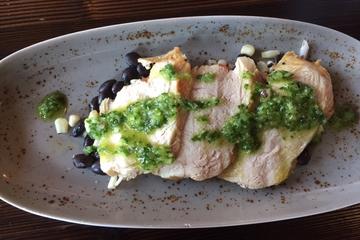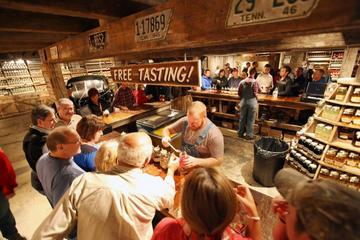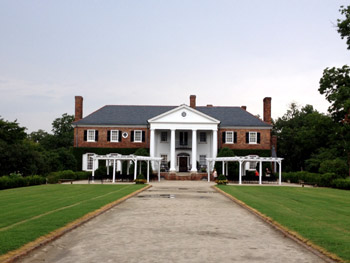
Boone Hall Plantation, South Carolina
by Hannah Murray
As a British person travelling in the Deep South, a new world of history, food and adventure lay before me. I wanted to see as many historical sites as possible within my six-week trip, and Boone Hall Plantation was in my top five places to see. Unfortunately, I arrived in the pouring rain. Some Americans think that it rains constantly in Britain, but I have never seen anything like the torrential downpours of the Carolina coast. For when it rains, the heavens open, and rivers form within roughly three minutes.
“Have you got an umbrella?” the ticket man asked me as I pulled up at the entrance. Having driven from Myrtle Beach, where it was very hot and sunny. I was wearing a maxi dress and sunglasses and must have looked a prize idiot. “Um, no I don’t. I’m hoping it’s going to stop soon,” My voice trailed away as the man looked at me pitifully. “Enjoy your visit.”
So the infamous drive I had been waiting for, the alley of oak trees leading to a spectacular mansion, took place in heavy rain. Not exactly what I had in mind. After a quick change in the back of my car (classy) I ran to the house and sat on the porch waiting for the rain to stop, which thankfully it did after an hour or so. I booked a house tour and a place on the Gullah presentation, and to kill time I read about the property and explored the slave cabins. Boone Hall began its colourful history in 1681 when Major John Boone, an Englishman, decided to settle in Charleston. The house has seen many different owners, including a German family that began a brick business, but since 1955 the McRae family have owned the estate, and it was their decision to open up the house for guided tours.
I walked over the waterlogged ground to the nine slave cabins that were in the front yard. The cabins are made from brick, which is incredibly unusual for the time because most were made out of wood. Visitors would have seen these cabins first before the main house, and the reasoning was that if the slave cabins were made from brick, you knew you were entering a wealthy plantation. Each cabin would have housed between 6-12 people, mainly house slaves as the field slaves would have lived in wooden cabins in the fields. (There was a hierarchy among the enslaved, and you were considered ‘higher up’ on the scale if you worked in the house.)
On this particular plantation, long grain rice was grown and produced by the enslaved population. This area of South Carolina was famous for rice and cotton, and many plantation owners earned thousands by selling their goods across the country, and beyond. For example, in Liverpool, England, 90% of imported cotton came from the South. Depending on the crop and the plantation owner (or overseer if the owner was away on business), the slaves would work from dawn until dusk in the sweltering heat. A slave was seen as property, and often a slave in their 30s with a particular skill (for example, a carpenter) could reach $1800 on the auction block. If a plantation owned 100 slaves…well you do the math. Slaves were allowed one set of clothes per year, and one day off a week or sometimes once a month; again this varied from plantation to plantation.
In each cabin, there was a small exhibition on the life of a slave and what happened to them after the Civil War. Quotes by Frederick Douglass, the fiery abolitionist William Lloyd Garrison and former slave Harriet Tubman adorned the walls. Tubman, my personal heroine, declared “there is either liberty or death, and if I can’t have one, I will have the other.” Standing in those slave cabins was the most surreal moment of my life so far. I had read about slavery for five years, imagined what life must have been like for a slave living in the heart of South Carolina, or in the humidity of Louisiana, but nothing came close to standing in that cabin, feeling the marks of fingerprints on the walls, and looking out of the window to stare at the alley of oak trees. Feeling the dust beneath my feet and staring at the broken pieces of glass, animal bone and metal. What would the enslaved have experienced within these walls? Loss and sacrifice. Heartbreak and death. Love and defiance. Survival. These slave cabins bridge the gap between two completely different worlds. We may never be able to recover the memories or the stories that scream to be heard, but the cabins stand as strong and silent testimony to those that lived and worked here. It was an incredibly moving experience, and one that I shall never forget.
I became so enthralled by the cabins I very nearly missed the Gullah presentation, led by an fascinating man and his small grandson, who played the drums for us. The Gullah are descendants from African slaves, and their language has influenced society for generations. The Gullah culture focuses on ancestors, and whereas we might say “our guardian angel was looking out for me today” someone who believed in the Gullah way of life would say “my great grandfather was protecting me today.” In the Gullah culture, no one dies per se: they merely ‘pass on’ to the next life (which is why we say somebody has “passed away.”) The Gullah people in South Carolina have preserved their religion, culture, and skills, passed down through the generations. Basket weaving is particularly important, and I found so many beautiful and colourful examples later on in Charleston.
After the presentation I rushed to the ‘Big House’ for my tour, an elegant home that is still lived in. Unfortunately, you were not allowed to take photographs, and the tour was confined to the library, the study and the dining room. Little was mentioned about the role of the slaves within the house, but the tour was interesting nonetheless. It was beautiful, although not as grand as some of the plantations you will find in Louisiana. Perhaps that is a good thing, depending on your taste. And so concluded my powerful trip to Boone Hall. I made my way to the car park, which now resembled a small river, and carefully drove down the alley of oak trees, this time in the sunshine. The best destinations are those that stir the soul, pull at the heartstrings or blow us away with their beauty. For me, Boone Hall managed to do all three.
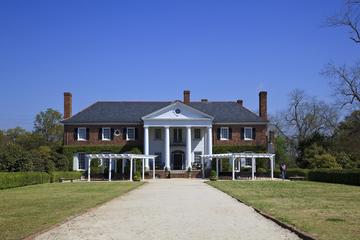
Boone Hall Plantation Tour from Charleston
If You Go:
Boone Hall is located roughly 10 miles from downtown Charleston, so if you’re travelling towards the city from the North it’s a great place to stop.
Boone Hall Plantation & Gardens
1235 Long Point Road
Mt. Pleasant, S.C. 29464
Phone (843) 884-4371
Adults – $20; Children (6-12) $10
Senior citizens 65+/Military/AAA Members – $18
Make sure you book a house tour and a ticket for the Gullah Presentation in the Information Office (around 30-45 minutes each). Talks at the slave cabin occur hourly. If mobility is a problem, the house organises a coach tour to take you around the site (lasting 40 minutes).
Visit their website for upcoming events
Charleston Tourism
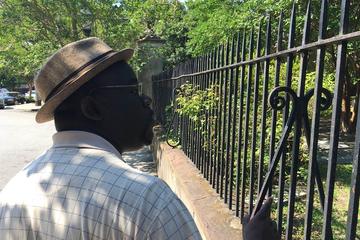
Lost Stories of Black Charleston Walking Tour
All photos are by Hannah Murray:
The plantation house
Slave cabin
A bed inside one of the cabins
About the author:
Hannah graduated with a Masters Degree from the University of London last year, and since then she has been researching the life of former African American slave Frederick Douglass. In the summer of 2013, she travelled solo through the Deep South for six weeks. She drove over four thousand miles and visited roughly 80 historic sites, sampling the gorgeous Southern cuisine as she went. Hannah would love to take people on the same trip and share with them the weird and wonderful places she came across. Hannah has created a website on Frederick Douglass in Britain – sites.google.com/site/frederickdouglassinbritain and has written about some of her travels on her blog, astudentofclio.blogspot.co.uk

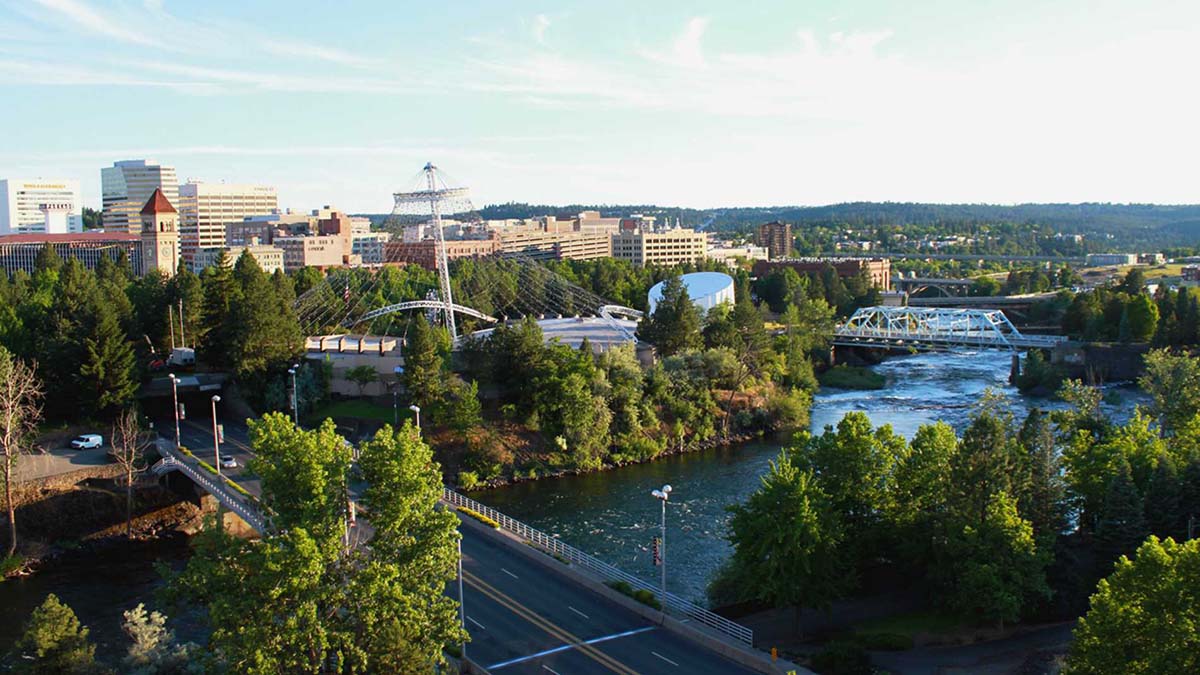
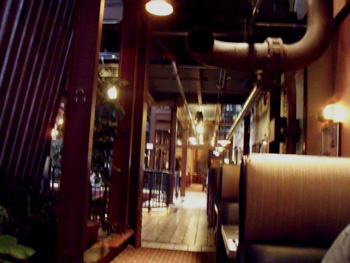 As I walked through the downtown area, I couldn’t help but notice just how much brick, stone, and terra cotta dominated the exteriors of the buildings. This came about after the fire in 1889, which destroyed 32 blocks. One of the city’s landmarks, Steam Plant Square, once provided much of the steam heat and electrical power for the city from 1916-1986, then it would remained neglected for ten years. To make a long story short, the building has been restored with some of its original infrastructure in tact that helps make the existing businesses and offices a unique place to explore or work in.
As I walked through the downtown area, I couldn’t help but notice just how much brick, stone, and terra cotta dominated the exteriors of the buildings. This came about after the fire in 1889, which destroyed 32 blocks. One of the city’s landmarks, Steam Plant Square, once provided much of the steam heat and electrical power for the city from 1916-1986, then it would remained neglected for ten years. To make a long story short, the building has been restored with some of its original infrastructure in tact that helps make the existing businesses and offices a unique place to explore or work in.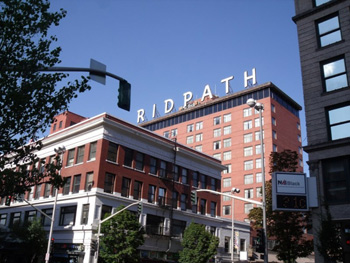 But I also savored some great-tasting beer and fish inside the landmark at the Stacks at Steam Plant. It has an intimate atmosphere dominated by an industrial brown and black motif. I dined amidst the factory’s old fixtures. The restaurant features a full menu of seafood, beef, chicken, and pasta dishes and brews its own beer, including one uniquely-flavored and really smooth tasting Double Stack Stout, which contains chocolate, vanilla, and espresso. I highly recommend the Smoked Steelhead, which has a taste to die for, as the fish was smoked over alder wood and brined in the restaurant’s Highland and Scottish ale and spices.
But I also savored some great-tasting beer and fish inside the landmark at the Stacks at Steam Plant. It has an intimate atmosphere dominated by an industrial brown and black motif. I dined amidst the factory’s old fixtures. The restaurant features a full menu of seafood, beef, chicken, and pasta dishes and brews its own beer, including one uniquely-flavored and really smooth tasting Double Stack Stout, which contains chocolate, vanilla, and espresso. I highly recommend the Smoked Steelhead, which has a taste to die for, as the fish was smoked over alder wood and brined in the restaurant’s Highland and Scottish ale and spices.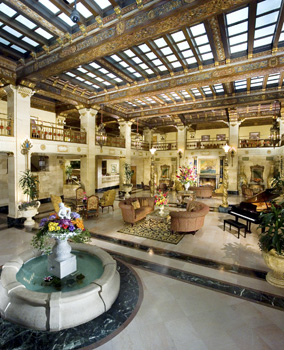 As a travel writer, a hotel is generally the first and last place I visit during a stay in a city. I’m more concerned about its functionality than anything else. Yet I couldn’t appreciate Spokane’s history without appreciating the history of a hotel that helped put Spokane on the map, The Davenport Hotel.
As a travel writer, a hotel is generally the first and last place I visit during a stay in a city. I’m more concerned about its functionality than anything else. Yet I couldn’t appreciate Spokane’s history without appreciating the history of a hotel that helped put Spokane on the map, The Davenport Hotel.
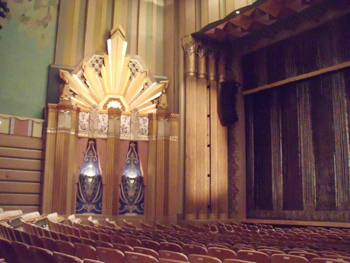 I’m impressed with Art Deco design, and in the heart of downtown an old movie house that originally showed 20th Century Fox pictures has become one of the city’s cultural meccas. The Martin Woldson Theater at the Fox was first opened in 1931, and what drew people there weren’t only the feature films, but the fact that it got to be the first place in town to get air conditioning, a must-see for Spokane’s curious locals. After it was closed down in 2000 during its bargain-movie-showing period, the long road to restoring it to its Art Deco glory would begin. Seven years and $31 million later, the dream came to pass. I was especially impressed with the auditorium, which holds 1,620-1,720 people and has green and pink stripes on the walls. The lobby exudes tropical designs on blue and gold walls. It took considerable time to remove the thick layers of red paint that dominated those days of cheap second-run flicks.
I’m impressed with Art Deco design, and in the heart of downtown an old movie house that originally showed 20th Century Fox pictures has become one of the city’s cultural meccas. The Martin Woldson Theater at the Fox was first opened in 1931, and what drew people there weren’t only the feature films, but the fact that it got to be the first place in town to get air conditioning, a must-see for Spokane’s curious locals. After it was closed down in 2000 during its bargain-movie-showing period, the long road to restoring it to its Art Deco glory would begin. Seven years and $31 million later, the dream came to pass. I was especially impressed with the auditorium, which holds 1,620-1,720 people and has green and pink stripes on the walls. The lobby exudes tropical designs on blue and gold walls. It took considerable time to remove the thick layers of red paint that dominated those days of cheap second-run flicks.
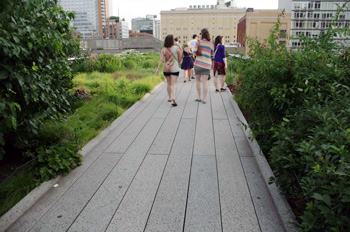
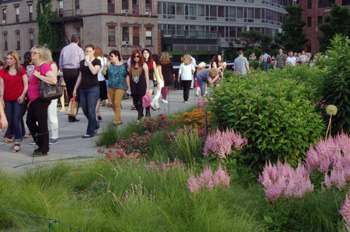 The High Line was set to be demolished around 1999 when a couple of New Yorkers started a movement to not only save the structure, but make it an extraordinary space for park goers to enjoy. The High Line is perfect for an early evening stroll when the Big Apple starts to cool down on a hot summer’s day. It’s free and although uncomfortably crowded in spots, you can’t beat enjoying the ever-changing streetscapes and unexpected scenery at your feet.
The High Line was set to be demolished around 1999 when a couple of New Yorkers started a movement to not only save the structure, but make it an extraordinary space for park goers to enjoy. The High Line is perfect for an early evening stroll when the Big Apple starts to cool down on a hot summer’s day. It’s free and although uncomfortably crowded in spots, you can’t beat enjoying the ever-changing streetscapes and unexpected scenery at your feet.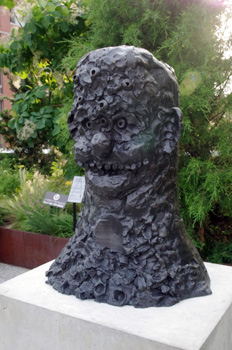 My travelling companions and I started the High Line near its northern terminus on West 30th Street between 10th and 11th avenues. Signage was not great and we got on the High Line by climbing a metal staircase only to find that there was an elevator nearby.
My travelling companions and I started the High Line near its northern terminus on West 30th Street between 10th and 11th avenues. Signage was not great and we got on the High Line by climbing a metal staircase only to find that there was an elevator nearby.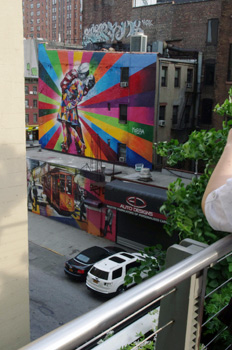 The walking path itself narrows to several people wide and expands to triple that in places with seating when it is most unexpected and appreciated. This includes a place called the 10th Avenue Square, complete with bleachers and huge picture windows for a broad view of the street life.
The walking path itself narrows to several people wide and expands to triple that in places with seating when it is most unexpected and appreciated. This includes a place called the 10th Avenue Square, complete with bleachers and huge picture windows for a broad view of the street life.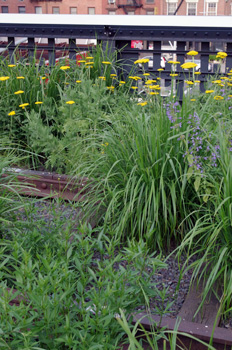 Sections of rusted track can be spotted throughout the High Line, but they are not always easy to find. This caused our group of park goers to each try to be the first to find a piece of old rail line at every change in garden space. The searches bordered on the obsessive by the end of our walk. Sometimes the old rails were far from the walking path and shaded by lush plants, growing among the rail ties like weeds did in the 1980s.
Sections of rusted track can be spotted throughout the High Line, but they are not always easy to find. This caused our group of park goers to each try to be the first to find a piece of old rail line at every change in garden space. The searches bordered on the obsessive by the end of our walk. Sometimes the old rails were far from the walking path and shaded by lush plants, growing among the rail ties like weeds did in the 1980s.
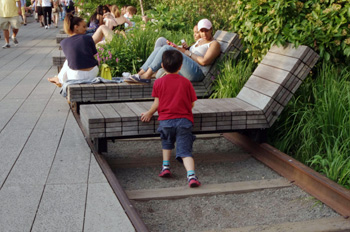 The High Line’s scale is more manageable than upper Manhattan’s huge Central Park. The two share a quirky characteristic in how the old concrete jungles appear to butt up against the green space of the parks for abrupt visual contrasts.
The High Line’s scale is more manageable than upper Manhattan’s huge Central Park. The two share a quirky characteristic in how the old concrete jungles appear to butt up against the green space of the parks for abrupt visual contrasts.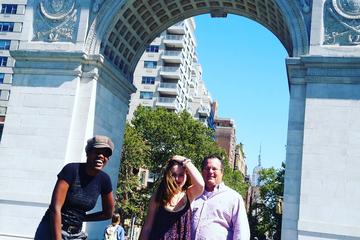
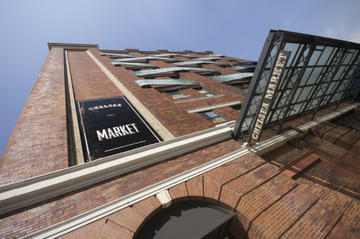
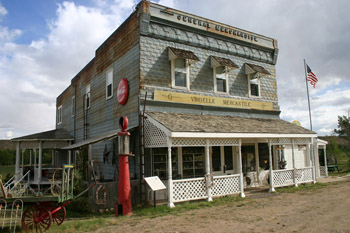
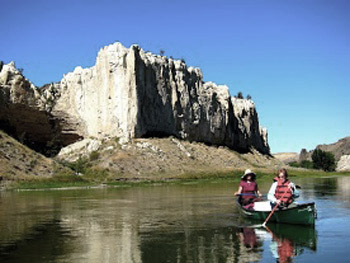 Rather than the tame goings-on of the last couple of centuries, it’s the little-known facts about Lewis and Clark and their expedition through un-mapped Missouri River wilderness which guide Mike Nottingham loves to discuss. This mountain man, trapper, fisherman, and river guide for the Missouri River Canoe Company even teaches you how to pronounce Sacagawea’s name correctly.
Rather than the tame goings-on of the last couple of centuries, it’s the little-known facts about Lewis and Clark and their expedition through un-mapped Missouri River wilderness which guide Mike Nottingham loves to discuss. This mountain man, trapper, fisherman, and river guide for the Missouri River Canoe Company even teaches you how to pronounce Sacagawea’s name correctly.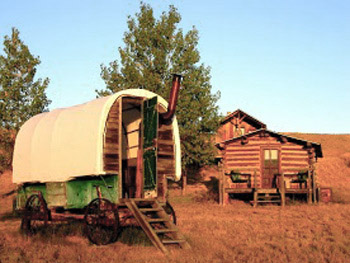 I went one step further. I chose the sheep wagon. How could I resist? It looked like one of the coolest places I would ever sleep. And it was. All night I heard coyotes howling in the distance as the light of the half moon glimmered through my canvas-topped covered wagon. I felt like Laura Ingalls.
I went one step further. I chose the sheep wagon. How could I resist? It looked like one of the coolest places I would ever sleep. And it was. All night I heard coyotes howling in the distance as the light of the half moon glimmered through my canvas-topped covered wagon. I felt like Laura Ingalls.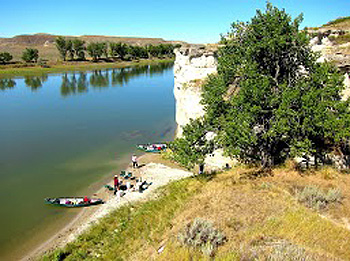 From our canoes, we didn’t see another soul on the river or bank, not a house, not even a broken-down homesteader’s shack. In fact, the Missouri Breaks landscape today, thanks to stewardship and land management, looks pretty much the way it would have looked to Lewis and Clark, even more so now than in the brief late-19th century steamboat days when trees were felled to fuel the boats. “The only difference now,” said Nottingham, “are the occasional Russian olive trees along the banks, which are invasive.” There’s also the odd cow which comes down from one of the ranches for a drink. Back then, of course, it would have been buffalo.
From our canoes, we didn’t see another soul on the river or bank, not a house, not even a broken-down homesteader’s shack. In fact, the Missouri Breaks landscape today, thanks to stewardship and land management, looks pretty much the way it would have looked to Lewis and Clark, even more so now than in the brief late-19th century steamboat days when trees were felled to fuel the boats. “The only difference now,” said Nottingham, “are the occasional Russian olive trees along the banks, which are invasive.” There’s also the odd cow which comes down from one of the ranches for a drink. Back then, of course, it would have been buffalo.
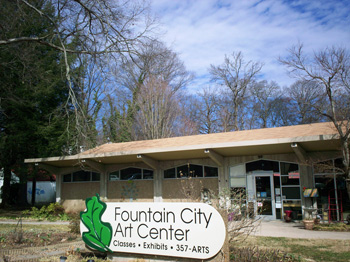
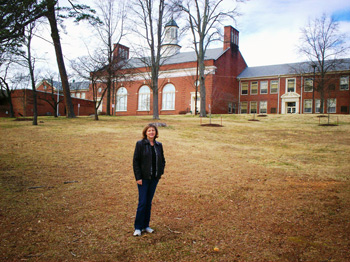 I did not attend Fountain City’s funeral, but a friend told me about it later and said it was quite an event that ended with the playing of “Taps.” Actually, as a teenager, I didn’t notice much difference after we were annexed, except that we got street lights on our street, which was a positive effect to me. I lived in Fountain City from the time I was nine until I got married and left, so I consider it my hometown. This trip was a sentimental journey for me.
I did not attend Fountain City’s funeral, but a friend told me about it later and said it was quite an event that ended with the playing of “Taps.” Actually, as a teenager, I didn’t notice much difference after we were annexed, except that we got street lights on our street, which was a positive effect to me. I lived in Fountain City from the time I was nine until I got married and left, so I consider it my hometown. This trip was a sentimental journey for me.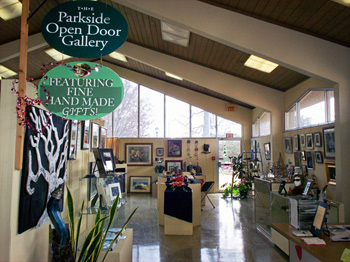 I remembered when I lived there that the building was home to the Fountain City Library. The Center was in-between main exhibits when we were there, but two new exhibits are now on display. The Knoxville Book Arts Guild and the Southern Appalachian Photography Society will be on view until April 8. Student exhibits from different area schools are also exhibited in the Center. There were some excellent works from middle school students on display when we were there.
I remembered when I lived there that the building was home to the Fountain City Library. The Center was in-between main exhibits when we were there, but two new exhibits are now on display. The Knoxville Book Arts Guild and the Southern Appalachian Photography Society will be on view until April 8. Student exhibits from different area schools are also exhibited in the Center. There were some excellent works from middle school students on display when we were there. The eight-acre park now has lots of colorful playground equipment in addition to the swings and slides that were there when I was a youngster. Unlike some playgrounds, it seems to get a lot of use during good weather. The park is also now circled by a paved walking path, with freestanding “porch swings” scattered along the trail where you can sit and rest and watch the people and look at the old trees and the natural spring which flows through the park into First Creek. Fountain City Park is not owned by the City of Knoxville, but is owned, operated and maintained by the Fountain City Lion’s Club. The Lion’s Club Building is in the park and can be rented for meetings. My late father was a member of the club and we held his eightieth birthday party there.
The eight-acre park now has lots of colorful playground equipment in addition to the swings and slides that were there when I was a youngster. Unlike some playgrounds, it seems to get a lot of use during good weather. The park is also now circled by a paved walking path, with freestanding “porch swings” scattered along the trail where you can sit and rest and watch the people and look at the old trees and the natural spring which flows through the park into First Creek. Fountain City Park is not owned by the City of Knoxville, but is owned, operated and maintained by the Fountain City Lion’s Club. The Lion’s Club Building is in the park and can be rented for meetings. My late father was a member of the club and we held his eightieth birthday party there.
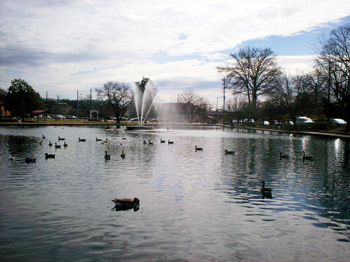 Before going to Litton’s, we walked around the block of Hotel Avenue and crossed the street to Fountain City Lake, also known as the duck pond. The lake was constructed around 1890. Designed by civil engineer F.G. Phillips, the heart-shaped body of water features a large fountain in the center gushing water skyward. We walked all around the lake, being careful to watch where we stepped. There were families there feeding the ducks, young couples and older couples strolling around, and even a couple of men fishing, and lots and lots of ducks.
Before going to Litton’s, we walked around the block of Hotel Avenue and crossed the street to Fountain City Lake, also known as the duck pond. The lake was constructed around 1890. Designed by civil engineer F.G. Phillips, the heart-shaped body of water features a large fountain in the center gushing water skyward. We walked all around the lake, being careful to watch where we stepped. There were families there feeding the ducks, young couples and older couples strolling around, and even a couple of men fishing, and lots and lots of ducks.